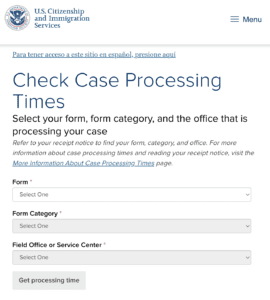Guide to PhD Green Card Via EB-1
Accomplishing the prestigious task of obtaining your Ph.D. is no easy feat. Using it to obtain a green card, however, may prove to be almost as challenging without help. Keep reading to view the requirements for an EB-1 Ph.D. Green Card and the best way to qualify for this distinguished immigrant visa.
EB-1 Green Card
The EB-1 is the topmost preference level for employment-based immigration. If you qualify for one, you will not need to have your employer go through the PERM process, which will be outlined later on in this article. The EB-1 is divided into three categories: the EB-1A, the EB-1B, and the EB-1C.
EB-1A
This category is reserved for individuals who exhibit extraordinary achievement in the areas of business, art, athletics, science, or education. To prove this extraordinary achievement, you will need to present evidence of an international award such as the Nobel Prize. In lieu of such an award, three of the following will suffice:
- A smaller award that is still internationally or nationally recognized
- Significant contributions to your practice
- Scholarly articles that have been published in a professional or trade journal
- Membership in an organization or association of distinguished reputation that requires its members to have an extraordinary ability
- Material written by others that details your ability
- Having been a judge of the work of others in your field on a panel or individually
- Playing a critical role in a reputable organization
- Having a large salary indicative of your ability
The USCIS also presents applicants with a catch-all phrase indicating that, if you have evidence that does not fall into the above groups, you may be able to submit it as comparable evidence. Work with your attorney to determine what qualifies as evidence under this rule.
If you do qualify for the EB-1A, you will be one of the few beneficiaries that can self-petition. Other than the EB-2 with a National Interest Waiver, the EB-1A is the only green card that does not require you to have a job offer or sponsoring employer, meaning that you only need to prove that you will be doing work in your field once you come to the U.S.
EB-1B
The second category available as an EB-1 Ph.D. holder is the EB-1B for outstanding researchers and professors. This reaches a narrower group than the EB-1A, but the requirements are lower. To qualify, you need to demonstrate that you have done at least two of the following:
- Received a renowned or distinguished prize or award for your efforts in your field
- Participating as a judge of the work of your peers in your field either individually or on a panel
- Contributed substantial research of a scholarly or scientific nature to your field
- Wrote scholarly articles or books in distinguished publications in your field
- Held membership in an organization in your field that requires outstanding work for entry
- Had material published by others about your work in the field
Again, much like the EB-1A, you are able to work with your attorney to submit comparable evidence if it is not listed above.
EB-1C
This last category is meant for the managers and executives of multinational companies. To qualify, you must have worked with the company for at least one year in the three years leading up to your green card petition.
The employer must be a multinational company that has been conducting business in the U.S. for at least a year before filing. This is a common green card for foreign nationals who have come over on an L-1A visa.
Green Card for PhD Holders
The EB-1 green card process for PhD visa USA is almost the same as with other employment-based green cards. The major difference is the fact that you don’t need to go through the PERM Labor Certification Process. And if you qualify for the EB-1A, you will also have the luxury of filing your petition yourself. These two factors will significantly expedite the process. That said, whether you are self-petitioning or applying through an employer, the EB-1 green card application for Ph.D. holders involves two steps, which are as follows:
File the I-140 Immigrant Petition for Alien Workers
The I-140 form is used to determine whether a green card applicant meets the job requirements for the position he or she is applying for. It also establishes the employer’s ability to pay the employee the required minimum wages. On average, the USCIS processing time for an I-140 petition ranges from 6-9 months depending on the service center in charge of your case. However, if you use the EB-1 premium processing service, the petition will be processed within 15 calendar days.
File the I-485 Application to Adjust Status
After the approval of your I-140, you will need to file an I-485 to request for adjustment of status from a nonimmigrant to an immigrant (green card holder) status. However, you can only submit the I-485 petition when the priority dates for both your EB-1 category and country are “current.” To know this, you will need to regularly check the monthly visa bulletin released by the USCIS. And once the date reads “C” (that means it is current), you will be able to submit your I-485 petition. You will receive your permanent resident card if your adjustment of status petition is approved.
How Your Ph.D. Can Help
While your Ph.D. does not automatically grant you a green card, you may find that many of the requirements for the EB-1A or EB-1B have been fulfilled throughout your studies. Things like exclusive memberships, scholarly published articles, and acting as a judge are all things that may go along with getting your degree.
However, it is important not to assume anything when it comes to immigration law. In the end, it still comes down to the discretion of the USCIS. Only an attorney who has dealt with multiple EB-1 for Ph.D. cases is experienced enough to effectively determine what qualifies as evidence.
EB-1 Processing Time for Ph.D. Holders
The amount of time you will need to wait does not change if you are a Ph.D. holder. You need to have your employer file an I-140 petition or file one yourself if you are self-petitioning under the EB-1A. The petition takes an average of six months to process, though this depends heavily on the service center that is processing your case. In the event that USCIS issues a Request for Evidence or NOID, then this will also add additional time to your case. Again, you can expedite the processing with premium processing, for a fee. (Not available for EB-1C.)
You can check exact case processing times by using this USCIS Case Processing Time tool.
Select the form, followed by the form category and then your field office or service center.
When is my priority date? This is the day USCIS receives your I-140.
Once the USCIS receives your petition, that date is marked as your “priority date”. Each month the Department of State releases a visa bulletin that shows the “final action dates” for green card petitions based on the different kinds of green cards and the country that the beneficiary is from. Once your priority date matches the final action date in your category, it will be considered “current”, allowing you to move on to the next step.
Once your priority date matches the final action date in your category, you can move on to the next step.
If you are inside the U.S. when your priority date becomes current, then you will be able to submit an I-485 application to adjust your status to permanent resident (green card holder). This step also takes an average of 6 months depending on the service center.
What If I Am Outside the U.S.?
If you are abroad when your I-140 is approved and your priority date is current, then you will need to go through consular processing. This means that you will have to make an appointment with the designated U.S. embassy or consulate located in your home country.
At that appointment, a consular officer will conduct a one-on-one interview with you to determine if you are who you say you are. This will involve asking you questions about yourself, your work, your employer, and your plans in the U.S. If your officer clears you, you will be able to enter the U.S. through your new green card.
The timeline for consular processing depends on how busy the consulate is. They may schedule your interview for a date several months away or only a few weeks. Keep this in mind as you make plans for your work.
Can I Use Premium Processing?
If waiting 6 months for your I-140 to process is too long, you can opt to have it expedited with premium processing. This service shortens your petition’s processing time to 15 calendar days for an additional fee. However, there are some things to keep in mind:
- Premium processing does not expedite any other phase of the green card process, only the I-140 petition.
- If your priority date will not be current for some time, premium processing may not help your case, as the USCIS may decide to process your I-140 closer to the time when your date will be current.
- Premium processing is not available for EB-2 NIW cases or EB-1C cases.
- The current cost for premium processing is $2,500.
Document Checklist for PhD Green Card Via EB-1
Apart from the I-140 and I-485 forms, you may also need to complete the following forms during your application process:
Completing all these forms can appear complex, especially if you are filing for a green card for the first time. However, these are straightforward forms. That being said, certain complications may arise when it comes to knowing the exact stage of the application process that each form is required. You may also encounter challenges when determining how to file the forms with required supporting evidence. The good news is that you can engage the services of an immigration lawyer to make the process much easier for you to improve the chances of approval.
EB-1 Green Card Processing Fees
The overall processing fee for the EB-1 green card for Ph.D. holders will depend on whether you are processing your petition from within the United States or abroad. Other factors will be whether you are using premium or regular processing, and your choice to use an immigration lawyer or not.
The basic fees are as follows:
- I-140 form: $700
- I-485 form: $1,140
- I-907 form for premium processing: $2,500 (optional)
- Consular Processing fee: This may vary depending on the country-specific requirements at each consulate or embassy
Alternatives to the EB-1 for Ph.D.
If the EB-1 is not an option, don’t lose hope. There are some other alternatives that may be available depending on your qualifications.
EB-2 NIW
The EB-2 usually requires applicants to have a job offer from a sponsoring employer in order to apply. In addition, that employer must obtain a PERM Labor Certification on your behalf. With a National Interest Waiver (NIW), however, you can bypass the job offer and PERM requirements by proving to the USCIS that your work will be beneficial to the United States.
In order to do this, you must demonstrate these three things:
- Your work will have a substantial positive impact on American health, culture, education, society, jobs, economy, technology, education, or science.
- You are uniquely qualified to work on and advance the work in the U.S. through your education, past successes, current progress, or business plan for the future.
- It will be to the advantage of the U.S. to waive the job offer and PERM requirements rather than to enforce them.
So if you are planning on using your doctorate to start a business in the U.S., the EB-2 NIW is a great alternative to the EB-1 for Ph.D. holders.
PERM Labor Certification
If the EB-1 and EB-2 NIW are unavailable as green cards based on your qualifications, a solid option is to apply for the EB-2 visa through the use of a PERM Labor Certification. You may only want to consider this after you have worked with your attorney and exhausted your other options.
The PERM is an involved and complicated process that requires many different steps and is easily impeded by errors without the help of an expert. Essentially, the PERM is a process used by the Department of Labor (DOL) to determine if U.S. workers are willing and able to take your position instead.
First, you will need an employer to sponsor you for your green card. Then, you would need to have that employer obtain the prevailing wage for your position. Once that has been determined, your employer will need to conduct a minimum 60-day recruitment process to find local workers. If a qualified U.S. worker applies, your employer will need to hire them in your stead or develop a good reason for why the candidate was rejected.
If the DOL is satisfied with the recruitment report and the position has not been filled, your employer can then move on to the I-140 and I-485 steps to complete the green card process.
The PERM process is also open to complications through random and targeted audits as well as supervised recruitment. The best way to avoid these obstacles is to have your immigration attorney handle the minute details of the process. For these reasons, the PERM is a viable, but not an optimal alternative to the EB-1 for Ph.D. holders.
Frequently Asked Questions
Below you will find answers to the most commonly asked questions about obtaining a green card with an EB-1.
Is there a direct path to a green card through my Ph.D.?
Unfortunately, there is no direct path. Having a Ph.D. does not automatically grant you an EB-1 or any other green card. It does, however, afford you the opportunities many people lack to fulfill some of the key requirements for an EB-1.
Do I need to have a STEM degree?
The STEM (or Science, Technology, Engineering, and Mathematics) degrees are helpful in obtaining a green card, especially if you are applying for the National Interest Waiver. However, the USCIS does not discriminate based on your field. Having your doctorate in English will not have a negative effect on your chances of getting an EB-1 for Ph.D. holders in comparison to a STEM degree such as computer science.
What should I do if my petition is denied?
The first thing is to know the difference between a rejection and a denial, since they are different in an immigration sense. If your petition is missing required information, some information is inaccurate/inconsistent or the fees were not properly filed then you will likely get a rejection notice. The good news is there is a way to correct the errors and then refile (with a new fee required). Hopefully, you’ve revised the inaccurate information and it can be approved when being assessed by an officer. If, however, you receive a straight-up denial then refiling is likely not a good choice. Your attorney may way to instead file an appeal or legal motion.
If those options don’t get you anywhere, you may also want to contemplate applying for a green card in a lower preference level.
How many recommendations do I need?
There is no stipulated number of recommendations for a green card applicant. However, you should try to get as many recommendation letters as you can. Keep in mind that you should ensure that the letters are well-written and they are from individuals that are well-known in your field.
How many publications do I need?
The USCIS does not state a particular number of publications an applicant must have. However, it will generally help to present six or more well-cited publications. Although there have been instances where petitions with fewer publications got approvals, they must be top-notch and you may also need to have other strong supporting documents to back it up. Keep in mind that publications are only one part of the requirements. In fact, the USCIS allows “comparable evidence” in a situation where the available documents aren’t exactly the same with the listed criteria.
Can I file multiple I-140 petitions simultaneously?
Yes, you can file multiple I-140 petitions at the same time, either through an employer or by self-petitioning. Many applicants do so to improve their chances of getting an approval. You can even file I-140 petitions for both the EB-1 and EB-2 NIW with the hope that at least one of them will be approved. Additionally, if your I-140 petition is denied, you can always file a new one. Each petition is processed independently and a decision on one does not affect the other.
Can I apply for a green card as an F-1 student?
Yes, you can petition for either the EB-1 or EB-2 NIW employment-based green card as an F-1 student. You also don’t need to wait until the completion of your Ph.D. program to petition; you can apply while still in F-1 status.
Due to the strict requirements of the EB-1 and EB-2 NIW, most F-1 students don’t consider them to be a viable route to permanent residency. However, if you can demonstrate the above requirements, you can be more confident. The only issue is that the F-1 status is not a dual intent visa. With this caveat, you may not be able to extend your F-1 status while your green card is being processed.
One way you can go about this for you is to first change to a dual intent visa such as the H-1B during your CPT or OPT, and then file a green card petition either by self-petitioning or through an employer. With this, you will be able to maintain a valid nonimmigrant status while the petition is pending.
Why Choosing an EB1 Lawyer is Recommended
VisaNation Law Group EB1 attorneys have helped countless individuals receive a Phd green card. The lawyers will carefully go through all your documents to ensure they meet the immigration qualifications, assist you in responding to any RFEs, NOIDs or other USCIS-requested information. Interested in having your spouse and children come to the United States? We can help you submit the appropriate petitions for that as well so your entire family can prosper in the United States.








